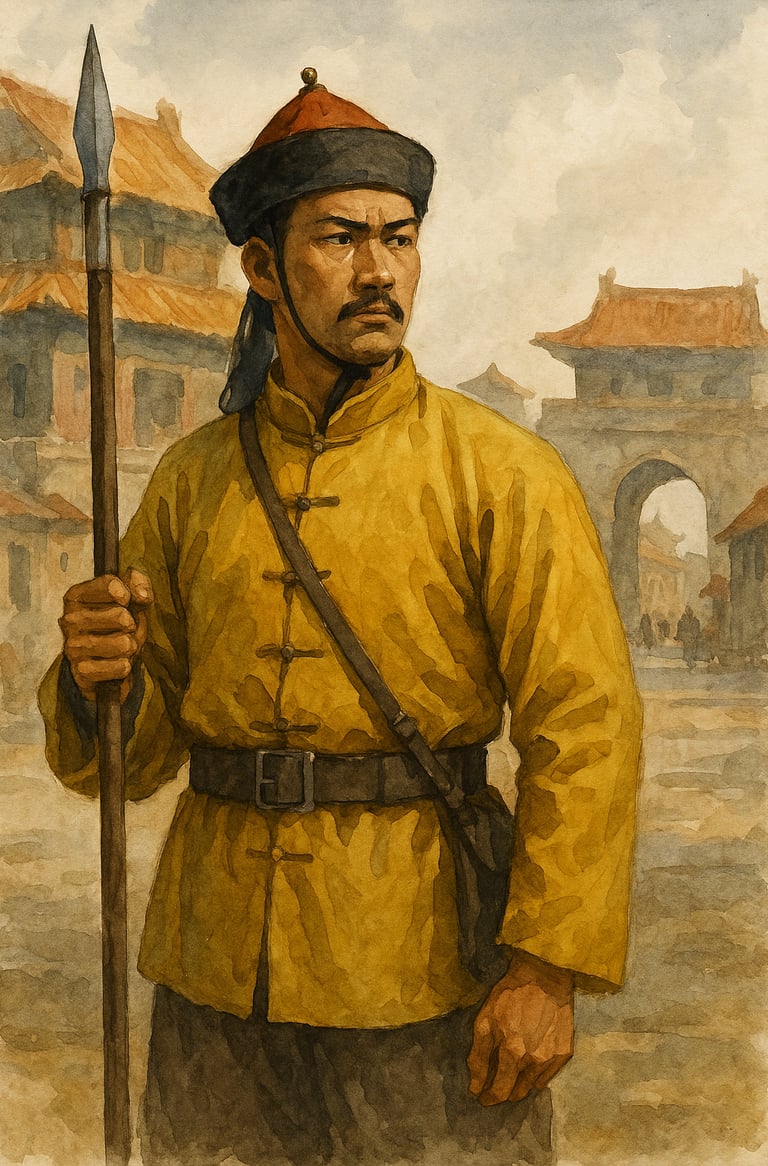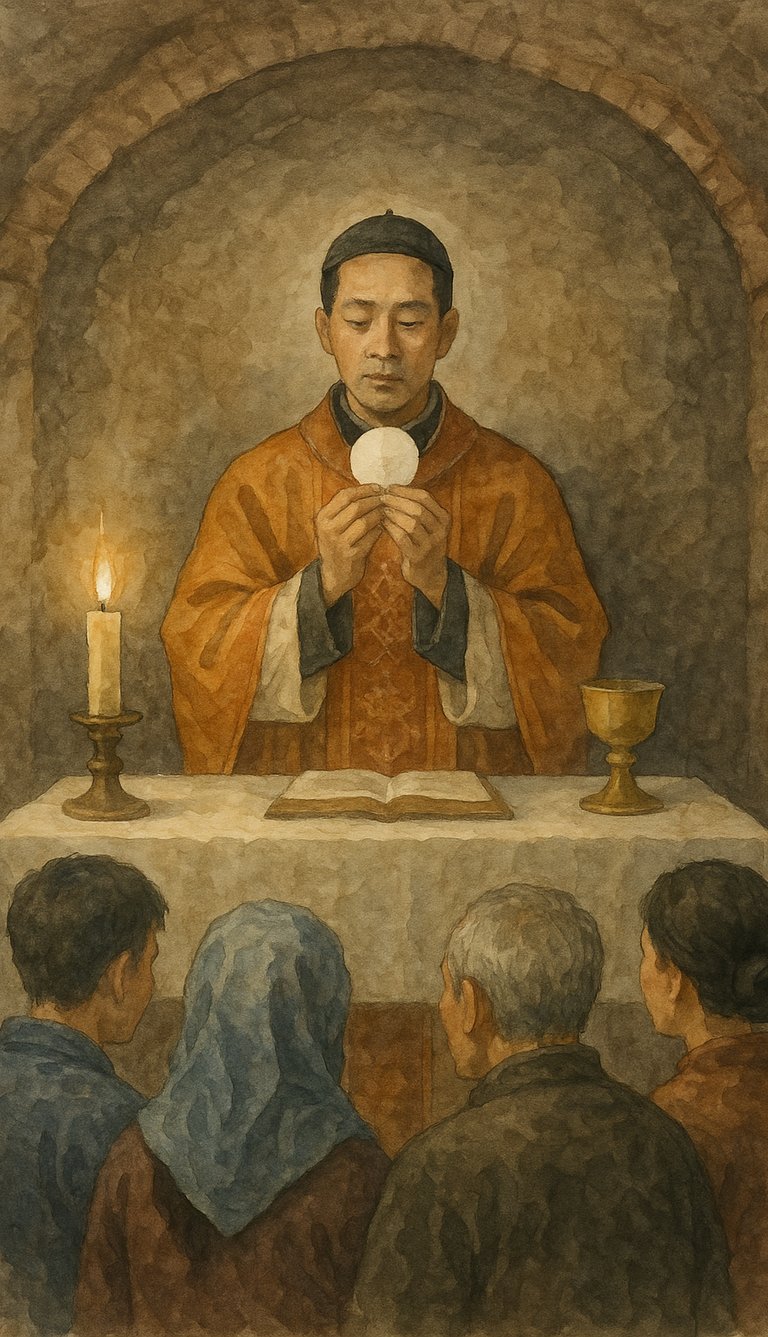St. Augustine Zhao Rong
From Soldier to Saint in a Forbidden Church
Halo & Light Studios
7/8/20253 min read


Click Link for a reel of Daily Dose of Saints and Faithful Art:
https://youtube.com/shorts/V7r7lK8bhAs?feature=share
In the great story of salvation history, some saints arrive with thunder—others with silence. But all arrive with purpose. St. Augustine Zhao Rong's life reflects not only a personal journey of conversion but also the long, complex, and often painful history of the Catholic Church in China.
Contrary to common belief, Christianity arrived in China not with the Jesuits in the 1500s, but as early as 635 A.D., during the Tang Dynasty. A Nestorian monk named Alopen brought the faith from Persia, welcomed by Emperor Taizong. The early Chinese Church—known as the Church of the East—was small but respected for a time. However, it slowly faded after waves of political instability, imperial suspicion, and persecution. True Catholicism, in communion with Rome, did not take root until nearly a millennium later.
In 1601, a new seed was planted—this time by the Jesuits, led by the brilliant missionary Matteo Ricci. Arriving at the court of the Ming Dynasty, Ricci and his fellow Jesuits used a strategy of inculturation: presenting the Gospel through the lens of Chinese culture, philosophy, and Confucian values. They didn’t begin by preaching, but by teaching. Jesuits shared knowledge of astronomy, calendar reform, geometry, cartography, clock-making, and music, stunning the imperial scholars. Slowly, doors opened. Ricci wore the robes of a Confucian scholar, spoke fluent Chinese, and wrote theological works using native concepts. Soon, Jesuits were working as imperial astronomers, artists, instrument-makers, and advisors. Their presence at court allowed them to introduce Christ subtly and wisely.
But harmony did not last. Other missionary orders, especially the Dominicans and Franciscans, later arrived and clashed with Jesuit methods. The heart of the dispute? The Chinese Rites: ancestral veneration and Confucian ceremonies. The Jesuits argued these were cultural, not religious. Their opponents disagreed. The resulting Chinese Rites Controversy escalated to Rome. Eventually, the Vatican condemned the rites in the early 1700s—a decision that infuriated the Chinese emperors. The Church lost favor. Missions were suppressed, and Catholics, both foreign and native, were persecuted.
This began an era of underground evangelization and martyrdom. The faith, once welcomed in palaces, now survived in peasant homes and prison cells.
Enter Zhao Rong, a Chinese soldier in the early 1800s. He had no knowledge of theology or Rome. His life was shaped by imperial loyalty and duty. When ordered to escort a captured French bishop, John Gabriel Taurin Dufresse, to execution, he expected another criminal.
But something broke open in his heart.
Bishop Dufresse, facing death, radiated peace. His silence preached. Zhao Rong, shaken by this witness, began asking questions. He converted, was baptized, and took the name Augustine. In time, he heard a deeper call: to the priesthood. Zhao Rong became one of the first native Chinese Catholic priests. He ministered in secret, in fear, and in fire. Eventually arrested for his priesthood, he was tortured and died in prison in 1815.
St. Augustine Zhao Rong’s story is not isolated. He is one of 120 Chinese Martyrs canonized in 2000 by Pope St. John Paul II, representing missionaries, catechists, mothers, lay leaders, and priests who gave everything for Christ over centuries. Their blood is the ink of Chinese Church history.
Today, the Church in China still walks a difficult road. It remains divided between the state-approved Patriotic Catholic Association and the underground Church, which remains loyal to Rome. Though the Vatican signed a provisional agreement with the Chinese government in 2018 to cooperate on bishop appointments, persecution continues: churches demolished, children barred from worship, clergy arrested.
And yet—faith remains. Hidden Masses. Secret rosaries. Quiet vocations.
In a world that seeks comfort, the Chinese faithful seek Christ. St. Augustine Zhao Rong reminds us that saints do not arise only from cathedrals or seminaries. Sometimes, they come from the barracks. Sometimes, the persecutor becomes the priest. His life tells us that the Church does not conquer by power, but by witness.
St. Augustine Zhao Rong, pray for China, pray for persecuted Christians, pray for us.


